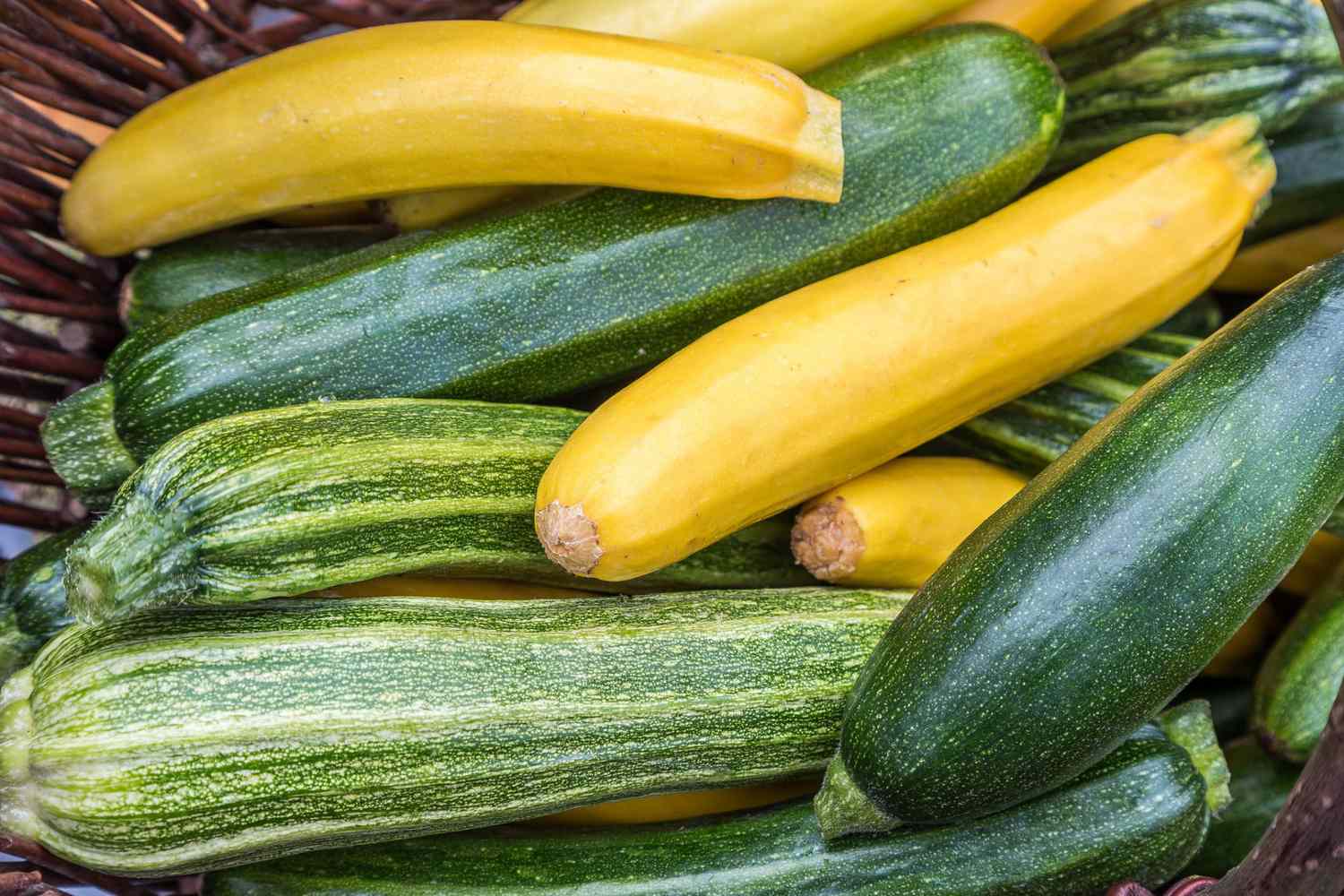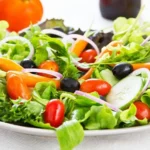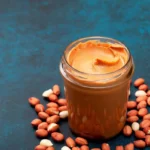
Zucchini is a member of the Cucurbitaceae family, which encompasses various types of gourd plants. This family is known for its diverse range of fruits and includes well-known varieties such as pumpkins, butternut squash, acorn squash, and cucumbers. These plants share similarities in their growth habits, leaf structures, and fruit development. Zucchini’s classification within this family highlights its botanical relationship to these other squash varieties.
Zucchini has a rich history that dates back to ancient times in Central and South America. It is believed that zucchini originated in Mesoamerica, specifically in present-day Mexico and Central America. Native peoples in these regions were among the first to cultivate and consume zucchini, recognizing its culinary versatility and nutritional value. Over time, zucchini became an important crop and spread throughout the Americas.
During the Age of Exploration, European explorers embarked on voyages that expanded their knowledge of the world and brought them in contact with new plants and cultures. It was during this period that zucchini was introduced to Europe. European explorers, including Christopher Columbus, encountered zucchini during their travels to the Americas. Recognizing its potential as a food source, they brought zucchini back to Europe, where it eventually gained popularity and became integrated into local cuisines.
The term “zucchini” finds its etymological roots in the Italian language. The word is derived from “zucchino,” which is the diminutive form of “zucca,” meaning “squash” or “gourd” in Italian. The use of the diminutive form, “zucchino,” reflects the small size and tender nature of this squash variety. Italians embraced zucchini as a culinary ingredient, incorporating it into various dishes and giving it the name that is commonly used worldwide today.
From a botanical perspective, zucchini is classified as a fruit. This is because it develops from the ovary of a flower and contains seeds. However, in culinary contexts, zucchini is typically regarded and treated as a vegetable due to its savory flavor and its common usage in savory dishes. This culinary categorization is based on flavor profiles and culinary traditions rather than strict botanical definitions. As a result, zucchini is commonly referred to as a vegetable in everyday language and cooking terminology.
Zucchini plants are highly productive and have a reputation for their abundant fruit production. Once the plants are established, they often produce an impressive number of zucchinis throughout the growing season. This makes zucchini a popular choice for home gardeners and farmers alike, as it offers a bountiful harvest.
Zucchini plants have separate male and female flowers on the same plant. The male flowers produce pollen, while the female flowers have a small embryonic zucchini at their base. Pollination occurs when bees or other insects transfer pollen from the male flowers to the female flowers, allowing fertilization to take place. This process is vital for the development of zucchini fruits.
Zucchini is not only delicious but also packed with essential nutrients. It is a good source of vitamins A, C, and K, which contribute to healthy vision, immune function, and blood clotting, respectively. Zucchini also provides potassium, an important mineral for maintaining proper fluid balance and heart health. Additionally, it contains dietary fiber, which aids in digestion and supports a healthy gut.
If you’re watching your calorie or carbohydrate intake, zucchini is a fantastic option. It is incredibly low in calories, with approximately 20 calories per 100 grams, making it an excellent choice for those aiming to maintain or lose weight. Additionally, zucchini is low in carbohydrates, making it suitable for individuals following low-carb or ketogenic diets.
Zucchinis can grow to extraordinary sizes under optimal growing conditions. In 2014, a remarkable zucchini broke records when it weighed a whopping 65 pounds and measured an impressive 8 feet 3 inches in length. This extraordinary specimen showcased the incredible potential for growth in zucchini plants, though it’s important to note that most zucchinis typically reach a more manageable size for culinary purposes.
One of the appealing aspects of zucchini is its versatility in the kitchen. It can be harvested and enjoyed at various stages of maturity. When young and small, zucchini has a delicate texture and mild flavor, making it ideal for raw preparations like salads or lightly cooked dishes such as stir-fries. As zucchini grows larger, it becomes more suitable for cooking methods like baking, grilling, or stuffing, where it can retain its shape and hold up to heartier ingredients.
The culinary possibilities with zucchini are nearly endless. Its mild flavor and tender texture make it an excellent addition to various recipes. Zucchini can be used to enhance the flavors and textures of soups and stews, grated or spiralized into noodles for pasta dishes, baked into breads and muffins, or even incorporated into desserts like cakes and cookies. The versatility of zucchini allows it to be creatively used in both savory and sweet culinary creations.
The flowers of the zucchini plant are not only beautiful but also edible. Both the male and female flowers can be harvested and used in cooking. The delicate blossoms can be stuffed with various fillings like cheese, herbs, or meats and then baked or fried to create a delightful appetizer or side dish. Their vibrant color and delicate flavor add a touch of elegance to any dish they adorn.
Zucchini’s high water content contributes to its refreshing and hydrating nature, particularly beneficial during hot summer months. The vegetable consists of approximately 95% water, aiding in maintaining hydration levels in the body. Including zucchini in salads, stir-fries, or even grilling it as a side dish can help keep you hydrated and refreshed during warm weather.
Zucchini is a widely cultivated vegetable worldwide, and the United States plays a significant role in its production. Among the top producers globally, the United States, particularly the state of California, stands out. California’s favorable climate and agricultural infrastructure make it an ideal region for zucchini cultivation. The state’s farms contribute significantly to meeting the demand for zucchini in domestic and international markets.
Zucchini plants are popular choices for home gardeners due to their ease of cultivation. They are well-adapted to warm climates and require consistent watering to keep the soil evenly moist. Additionally, zucchini plants thrive in full sunlight, typically requiring at least 6 to 8 hours of direct sunlight each day. These factors make zucchini an accessible and rewarding vegetable to grow in home gardens.
The foliage of zucchini plants is characterized by its large, broad leaves. These leaves not only contribute to the plant’s aesthetic appeal but also serve a practical purpose. They provide shade to the developing zucchini fruits, shielding them from excessive sunlight. This shade helps prevent sunburn and promotes even fruit development.
While green zucchini is the most common variety, zucchini plants also produce yellow varieties. These yellow zucchinis are often referred to as “yellow zucchini” or “golden zucchini.” They have a similar flavor and texture to green zucchini but possess a vibrant yellow color. Yellow zucchini can add visual interest to dishes and provide a delightful variation in color when mixed with green zucchinis.
Zucchini plants have a remarkable ability to produce a continuous harvest. As long as the plants are well-cared for and provided with favorable growing conditions, they can yield a plentiful supply of zucchinis throughout the growing season. Regular harvesting encourages the development of new fruits, ensuring a steady supply of zucchinis for culinary endeavors.
If you find yourself with an abundance of zucchinis, there are several preservation methods you can employ to enjoy them beyond the growing season. Zucchini can be frozen by blanching the slices or grating it for later use in soups, stews, or baked goods. Pickling zucchini is another popular option, providing a tangy and crunchy addition to salads or sandwiches. Additionally, zucchini can be canned or made into relishes and chutneys to savor its flavors throughout the year. These preservation techniques allow you to enjoy the bounty of zucchinis long after the growing season has ended.
Due to its mild flavor and adaptable texture, zucchini is commonly used as a versatile ingredient in vegetarian and vegan cooking. It can be spiralized into zucchini noodles, also known as zoodles, which serve as a healthy alternative to traditional pasta. Additionally, zucchini can be grated and combined with other ingredients to create flavorful plant-based burgers or meatballs.
Zucchini’s high water content and low calorie count make it an excellent choice for those looking to manage their weight. The high water content contributes to its hydrating properties, while the low calorie content allows for guilt-free enjoyment. Adding zucchini to meals can help create a feeling of fullness while providing essential nutrients, making it a valuable ingredient for weight-conscious individuals.
The vibrant and delicate blossoms of zucchini plants are not only visually appealing but also edible. These flowers are a prized ingredient in many cuisines and can be stuffed with various fillings such as cheese, herbs, or other vegetables. After stuffing, they are typically dipped in a light batter and fried to create a delectable appetizer or side dish.
Zucchini contains a significant amount of dietary fiber, which plays a vital role in maintaining a healthy digestive system. Fiber adds bulk to the stool, promoting regular bowel movements and preventing constipation. Including zucchini in your diet can contribute to a well-functioning digestive system and overall digestive health.
Zucchini is packed with antioxidants that offer numerous health benefits. It is particularly rich in vitamin C and beta-carotene, both of which are powerful antioxidants. These antioxidants help neutralize harmful free radicals in the body, reducing oxidative stress and supporting overall health. Vitamin C also plays a crucial role in strengthening the immune system, aiding in the body’s defense against illnesses and infections. Including zucchini in your diet can provide a natural boost to your immune system and overall well-being.
Zucchini FAQs
Zucchini, a versatile summer squash, is a popular garden veggie and a delicious addition to many dishes. Here are some answers to the most commonly asked questions about zucchini:
1. What is zucchini?
Zucchini (Cucurbita pepo) is a summer squash, a type of gourd harvested while immature. It’s a member of the Cucurbitaceae family, which also includes pumpkins, cucumbers, and melons. Zucchini is known for its cylindrical shape, smooth green skin (although yellow and even spotted varieties exist), and mild, slightly sweet flavor.
2. What are the different types of zucchini?
There are several varieties of zucchini, but the most common are:
- Green zucchini: This is the classic type, typically dark green with a light green flesh.
- Yellow zucchini: Similar to green zucchini but with yellow skin and a slightly sweeter flavor.
- Round zucchini: Also called “UFO zucchini” or “ball zucchini,” this variety has a round or disc-shaped form.
- Italian zucchini: These are smaller and more slender zucchinis with a darker green skin, often preferred for their delicate flavor.
3. How to choose zucchini?
When selecting zucchini, look for firm fruits (yes, zucchini is technically a fruit!) They should feel heavy for their size and have smooth, unblemished skin. Avoid zucchinis that are too large or have soft spots or wrinkled skin. Smaller to medium-sized zucchinis tend to have the best flavor.
4. How to store zucchini?
Zucchini can be stored in the refrigerator crisper drawer for up to a week. For longer storage, you can blanch (briefly boil) zucchini pieces and freeze them for several months.
5. How to prepare zucchini?
Zucchini is incredibly versatile in the kitchen. Here are some ways to prepare it:
- Shredded: Shredded zucchini can be added to salads, fritters, or baked goods like zucchini bread for moisture and a mild sweetness.
- Sliced: Zucchini slices can be sauteed, grilled, roasted, or stir-fried. They can also be spiralized into “zoodles” as a healthy noodle alternative.
- Stuffed: Hollowed-out zucchinis can be stuffed with various fillings like rice, meat, or vegetables and baked.
- Breaded and fried: Zucchini slices can be coated in breadcrumbs and pan-fried for a crispy side dish.
6. What are the health benefits of zucchini?
Zucchini is a low-calorie and fat-free vegetable packed with nutrients. Here are some of its health benefits:
- High in vitamins and minerals: Zucchini is a good source of vitamin A, C, K, and manganese.
- Rich in antioxidants: Zucchini contains antioxidants like lutein and zeaxanthin, which may benefit eye health.
- Promotes digestion: The fiber content in zucchini aids digestion and gut health.
- Hydration: Zucchini is high in water content, helping you stay hydrated.
7. Can you eat zucchini flowers?
Yes! The large yellow flowers of the zucchini plant are edible and can be added to salads, stuffed, or battered and fried.









